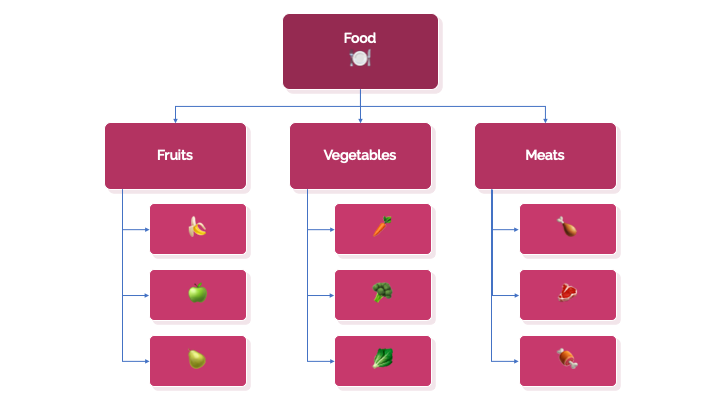When we spend all our time and efforts creating a fantastic in-depth piece of content that is visually appealing and loved by our customers, prospects, and clients – why not receive some of Google’s love too and grow your qualified organic traffic?
In many ways, the things that the Google algorithm favors are similar to what your target audience loves.
They all want relevance, structure, and authority:
The best answer to a search query.
In today’s search results an excellent piece of content has the best chances of ranking well.
Read on to learn how you can integrate content marketing and SEO to receive the most organic traffic and conversion from your content marketing.
Stating the Obvious
If you follow Kevin Rowe’s ideas in 20 Places You Should Be Sharing Your Content, you are already distributing your content piece to receive more online exposure and links.
Links are still one of the main ranking factors for Google.
Equally important is covering a topic thoroughly to increase relevance.
Not every piece of content needs to be optimized for search.
There are other reasons to write content (for example for social shares or to increase trust and conversion) but if you want to make the most of your content marketing and improve ROI – SEO should be on your radar.
Factoring in SEO
To create a holistic strategy when it comes to content marketing and SEO, I invite you to consider three factors:
- What you want to communicate: Your vision, value proposition, topics, and issues – the things that you stand for as a business and that you are passionate about.
- What people are searching for: Using keyword research as an opportunity to study your target audience, the market demand, and the interest online.
- What Google favors: Reviewing Page 1 to understand what Google deems to be the most relevant answer – and replicating something competitive.

Google Likes Structure
Let’s talk about your content ideas from an SEO perspective.
Clarity and structure win the Google game.
Each one of your content ideas, pages, or blog posts should cover one topic, one intellectual entity.
Think of your pages more like a Wikipedia entry (a knowledge base that covers a topic in-depth) than a collection of long-tail keywords.
A page should cover the topic so well that it satisfies the user’s search intent.

Each page will be optimized for one keyword cluster consisting of main and supporting keywords.
We use keyword variations and synonyms to make it easy for Google to understand what we are writing about – as well as the context of the topic.
The process of keyword research helps us to determine topics that are relevant to our target audience. SEO tools such as Ahrefs or SEMrush allow us to review the following:
- Synonyms, variations, and related keywords to cover within a page
- Monthly search traffic to understand marketing interest
- Click potential by estimating click-through rate to account for ads, featured snippets, etc.
- Keyword difficulty to prioritize based on chances of success
Making data-driven decisions helps to increase your chances of success online.
When evaluating content ideas, you will always want to factor these metrics in.
Avoiding Keyword Cannibalization
For each unique and clearly distinct topic idea, you will want to create a specific page and cover the topic in-depth.
Similarly, you will want to make sure that every topic is only covered once.
The questions are:
- Did we cover this topic before?
- Can we upgrade or rework an existing page?
From an SEO perspective, you will always want to update an existing page over creating a second, third, fourth piece on the same topic.
Evergreen content wins for SEO.
You are already competing with billions of pages on the web for the top rankings, why compete with yourself?
When several of your own pages fight for page 1, this is called keyword cannibalization and this really hurts your SEO effort.
In most cases, you will want to review your existing content and find the blog posts and pages that have covered the topic before.
Leverage the age of the post, existing ranking, and links by turning a medium-performing post into something great.
If you are looking to create a “Christmas gift guide for women”, you are better off reworking, adjusting and redesigning the existing page every year – than creating a new post that will never make it to the top.
If you realize that you have several posts covering the same topic, consider migrating them all into one page and using that as the foundation for your new content piece.
Only start creating a new content piece, if you have a true content gap and have not covered the post in the past.
Understanding Page 1
Before jumping into content writing, let’s have a look on Page 1 of Google to determine the right type of content to rank well.
Often content creators and marketers guess the user’s intent behind a query and the content type they should be writing.
But the best way to figure out what users and Google want is to actually review Page 1.
You will find that there are at least nine different types of search results that provide different types of content to the user.
- Research: Definitions, long guides, knowledge graphs or featured snippets
- Answer: Usual zero-click searches like weather, currency conversion, time zones
- Transactional: Product and category pages, ecommerce results
- Local: Maps, local results
- Visual: Images, thumbnails media elements
- Videos.
- News: Newspapers, tweets, top stories
- Branded: Homepage with sitelinks, social media channels of a brand
- Mixed: When Google is not clear on the search intent, they provide a bit of all. Google “Panda” or “Jaguar” to check it out.
The short answer is: You will want to create the type of content that is currently displayed on Page 1 for your topic and keywords.
Next to that, you will have the chance to understand the following by studying Page 1:
- Sub-topics and concepts used by top-performing content
- Headlines covered in the articles
- Keywords utilized
- Average content length of Page 1 results
You can use tools to save time in your Page 1 review but ultimately, a good content creator will always leave the tools and have a real look and factor the learnings into their content briefing.
And sometimes creating the best answer is not about creating an ultimate guide.
Yes, We Still Do Keywords
Finally, make sure that your content is ft for SEO.
Every piece of content will start ranking for many synonyms and variations because Google is getting better and better at understanding concepts and context.
But Google’s algorithm is also still an algorithm.
So make it easy for Google to understand what your piece is all about.
Yes, you will still want to use your main keyword in:
- URL
- Headline H1
- Meta Page Title
- First Paragraph
Not just because it makes sense for Google but also because it makes sense for the users to be congruent as they go from entering a search query to finding your result, to clicking and to reading the article.
Yes, you will want to optimize your images, especially if you are trying to win a visual search result page.
Some Technical Love
To be truly fit for SEO, you will lastly want to make sure to implement schema markup and structured data.
Technical SEO helps to increase clarity for Google.
You can mark up details about the author of a page, the product displayed, lists, videos and other elements, your business, and organization as a whole.
Summary: Making the Most of Content Marketing & SEO
Your content marketing has the best chances of succeeding in organic search if you factor in the following:
- Select specific, clearly distinct, and unique topic ideas.
- Use keyword research to prioritize content ideas.
- Update existing pages if you want to cover a topic again.
- Review Page 1 to understand the content type to create.
- Optimize your page with keywords.
- Implement schema markup.
And you will have a piece of content that will have the best chances of bringing in sustainable, qualified, and long-lasting organic traffic.
Image Credits
Featured Image: Paulo Bobita
In-Post Images: Created by author





